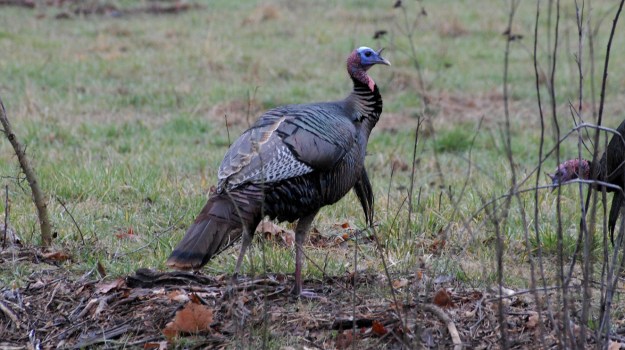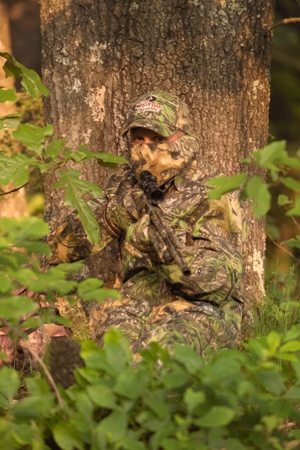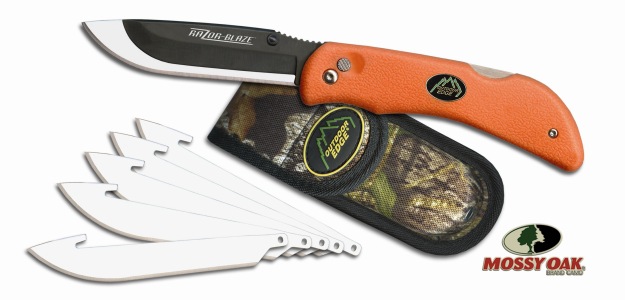
Turkey hunting continues to be a tradition in this country and has gained popularity in the past few years, nearing the number of hunters who prefer the whitetail as game. When it comes to the overall quest for the turkey, one should always begin by purchasing that perfect shotgun that works for the individual. Weight, size, everything should feel right before selecting the one made just for you, as well as searching for the right ammo that will do the job.
From purchasing to patterning, the turkey hunter must make sure the shotgun offers the perfect pattern to turn that gobbler from prey into dinner. Packing up the right gear before heading out to the hunt is also essential, from the camo to the vest to the decoys and calls you prefer. Now, it’s time to scout.
After choosing the land, whether it be requesting access from private landowners or simply utilizing the vast amount of public land that your state provides, find and learn all there is to know about the area that best suits your needs.
Gear? Check. Location? Check. Now comes the process of locating the turkeys. Creatures of habit, roosting in the same area each and every night is basically the turkeys M.O. So, for best results, start your scouting before the season begins and keep track of the turkey roosting areas that are perfect for sneaking in predawn and setting up. A tip would be to make sure you’re within a 100 yard radius of the roosting trees, for the required and ethical 40-yard shot to take place. Once there, use a locator in order to make sure the turkeys are ready for battle.
Another tidbit is to learn and discover what and where the turkey food sources are located for the time of year you’re hunting. Although homebodies, turkeys will move their location depending on the season and where the best food crops are planted. And don’t count out the hen, by the way. When it comes to springtime if the hens are roaming, the turkeys are sure to be close by.
 When it comes to the turkey locator, try to make a variety of calls, preferably with a diaphragm call. Changing things up makes it sound to the gobbler like there are far more hens than just one he’s heading toward. Box or slate calls are very good when it comes to making your probing call, and either will allow hunters to learn a variety of techniques to vary the call. But when the turkey appears, go back to your diaphragm, allowing your hands free to make that shot. Climate, location, season - differences do occur that should be taken into account when it comes to the most effective call.
When it comes to the turkey locator, try to make a variety of calls, preferably with a diaphragm call. Changing things up makes it sound to the gobbler like there are far more hens than just one he’s heading toward. Box or slate calls are very good when it comes to making your probing call, and either will allow hunters to learn a variety of techniques to vary the call. But when the turkey appears, go back to your diaphragm, allowing your hands free to make that shot. Climate, location, season - differences do occur that should be taken into account when it comes to the most effective call.
Although hunting in the rain can be done and is actually preferred by some hunters, fair weather days are seen as the most effective when it comes to catching the gobbler. Not only is the climate more enjoyable for the hunter, the wild turkey is more likely to head out into that sunny field and open area. In addition, having that open area to move helps far more with scouting, pursuing and shooting.
The sun also provides benefits. If the hunter approaches from the west in the afternoon hours, the turkey must look directly into the sunlight which offers a blinding effect making it tougher for the hunter to be spotted.
When it comes to using a decoy, the wild turkey has proven that he prefers to cross flat terrain on an upward slope when heading for the decoy. Perhaps it’s their inner sense that knows it’s far easier to spot danger when walking pastures or going uphill. A tactic used by professionals is to hunt in a valley, placing decoys at the top of a ridge so that they are easily spotted by the gobblers below.
Patience is a virtue. Extremely annoying, yes, but the wild turkey is survival-based, and if rushed, will end up doing exactly what the hunter does not want them to do. If the turkey is gobbling, he’s extremely interested and will take his time. Being overly aggressive will turn the almost triumph into a bad turkey day.
It’s important to remember that turkeys have keen eyesight; so camo from head to toe is key. Mossy Oak Obsession and Break-Up Infinity are great options.
It is preferable to locate gobblers in the evening; the turkey will offer a ‘shock call’ at almost everything, from the howling coyote to a locator call. Then, in the predawn hours, set up with your back against a large tree for both safety and concealment. Choose the correct position that will give you the high veracity and visibility needed to make the perfect shot.
Keep patient, and that gobbler will most definitely be on the center of the dining room table looking mighty tasty.






























